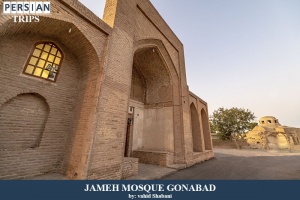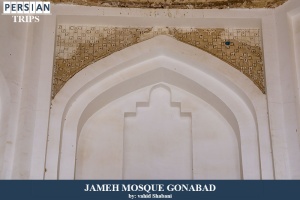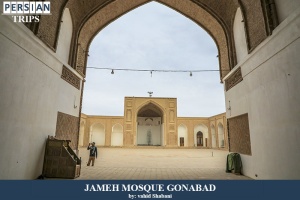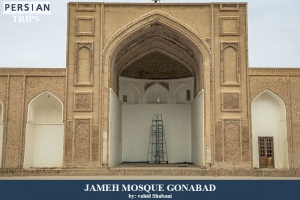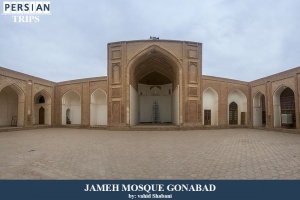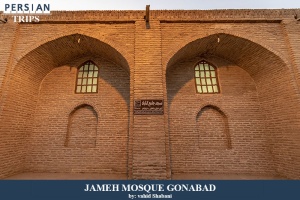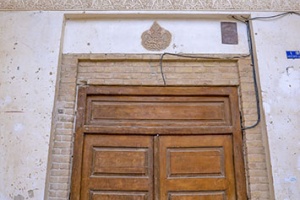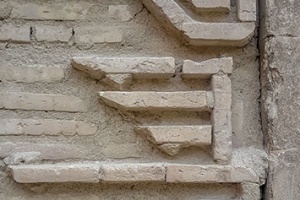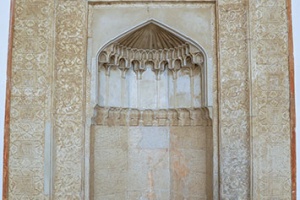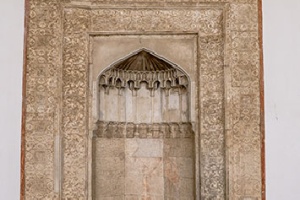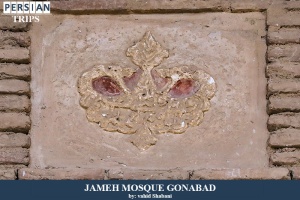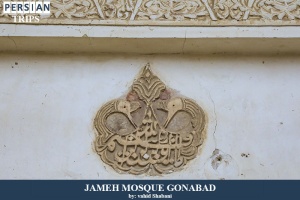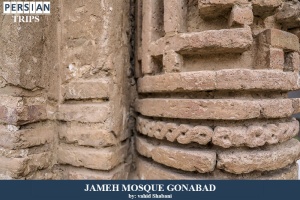Gonabad Jameh Mosque
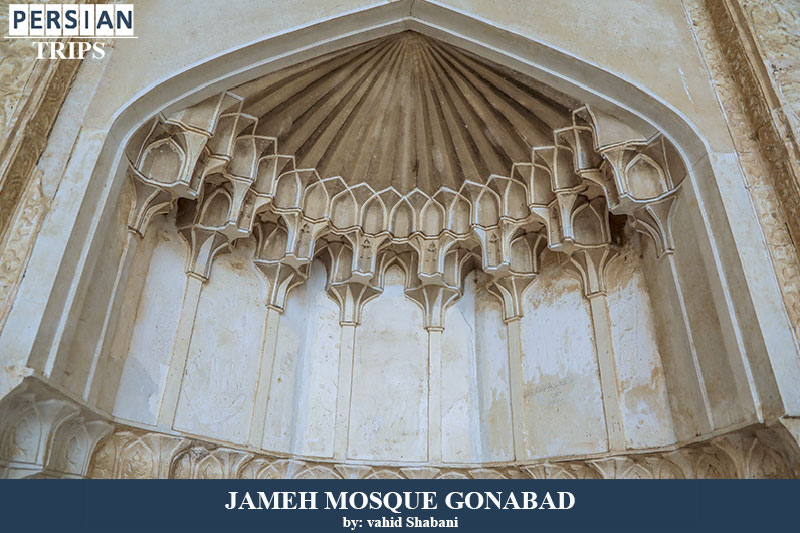
Gonabad Jameh Mosque, which is one of the historical masterpieces of Razavi Khorasan Province, is located in the center of Gonabad; this two-iwan mosque is contemporary with Zuzan, Sangan, Toos and Freyumd mosques.
Gonabad Jameh Mosque was registered on the list of national monuments in 1969. The plan of Gonabad Jameh Mosque includes a decorative door, courtyard, north and south iwans, and three columned shabestans (prayer halls). The summer shabestan is on the south side (known as Yasin or Quran shabestan), the spring shabestan is on the east side and the winter shabestan is on the north side. On the west side, there was probably an autumn shabestan, which was destroyed by past earthquakes; some of its pillars have recently emerged as a result of excavations by the Gonabad Cultural Heritage Office. Gonabad Jameh Mosque has two entrances from the northeast side and southeast of the courtyard through an alley in the east of the mosque. The southeastern entrance is simple but the northeastern entrance has interesting plaster decorations including floral and bird motifs. Although changes have been made over time, this mosque has retained its original structure despite severe earthquakes and repeated repairs. According to the Kufic brick inscription that adorned the facade of the south iwan, the date of construction of the building goes back 1213; in fact, this mosque is one of the two historic mosques of the Kharezmshahi dynasty. The important features of the building are Kufic inscriptions and beautiful brickwork that are engraved around the porch of the qibla; inside this porch, there are two brick Kufic inscriptions, one of which contains the name of the builder and the other contains Quranic themes.
Architecture of Gonabad Jameh Mosque
The architecture of Gonabad Jameh Mosque is introverted. In the past, Iranian architects separated the building from the outside world by arranging parts of the building around one or more courtyards, connected through a porch. The materials used in the architecture of Gonabad Jameh Mosque are brick, clay, mud and plaster. The decorations of this mosque include plastering and brickwork, along with some glazed bricks. Most of the plaster works, which adorned the altars and the entrance of the mosque with floral and bird motifs, belong to the Qajar era. The main altar of the building is located inside the qibla porch; however, there is another altar in the northeastern shabestan, which belongs to Qajar period; the third altar, which was discovered a few years ago in the northeastern shabestan, probably dates back to Ilkhani period. The south iwan has inscriptions in Kufic script and the north iwan decorations include rectangular and square frames with decorative bricks and various designs. Gonabad Jameh Mosque has been reconstructed in recent years in several stages; the most important restoration measures of this valuable historical monument in recent years are bricklaying the eastern shabestan roof, flooring, lighting and plastering of the southeastern shabestan, replacement of two wooden doors, and brick decorations on the two entrance iwans.
To visit Gonabad Jameh Mosque and other attractions of Razavi Khorasan Province, you can participate in Persiantrips tours.
Tags: Razavi khorasan Province, Razavi khorasan Attractions, Jameh Mosques in Iran, Iran Historical Attractions, Iran Religious Attractions, Gonabad Jameh Mosque
